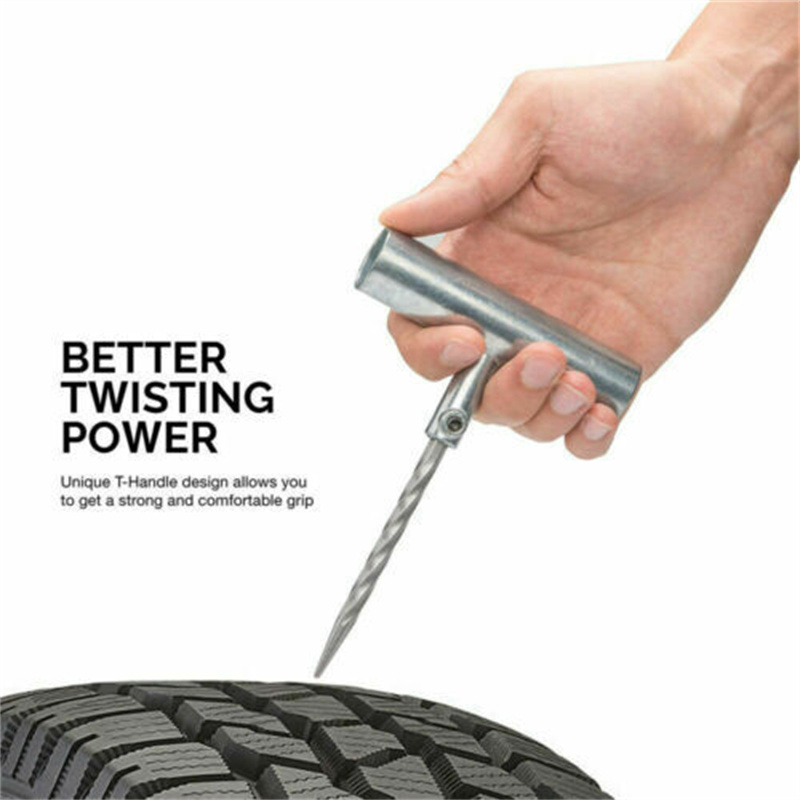05
Feb,
2018
Whether you experience a puncture or a blowout, it's not a good idea to drive on a flat tire to get to a tire repair shop. The only exception to this rule would be that you need to get your family to safety. Driving on a flat—even a tire with a nail still stuck in it—can cause further damage and will almost always increase your flat tire repair cost. Also, remember not to drive on a spare tire farther than the owner's manual indicates.
So, how much does flat tire repair cost? It might surprise you. A simple tire repair cost is very minimal. However, the real cost will come to you later if you neglect to have the tire repaired as soon as possible and especially if you continue to drive on it.
Of course, a flat tire repair cost depends on the extent of the damage. If you repair a simple puncture as soon as possible, it may run between $15 and $30. A simple tire service typically utilizes plugs. These should last indefinitely, but it's a good idea to regularly check the tire pressure on any tires you've had plugged.
If you continue to drive with a flat tire, the repair costs will escalate, and in many cases, the tire or tires will all need to be replaced. Continuing to run on flat tires can also negatively affect the wheels, brakes, and suspension, not to mention the towing expenses that will be incurred when you are no longer able to drive your car without new tires.
Even more important than your flat tire repair cost is your safety. If you don't know how to change a flat tire or if you don't have the tools, don't try to do it yourself. It’s the smart thing to call for help!
Wondering how much does flat tire repair cost? Contact our ASE Certified Technicians at Rum River Automotive for more information about tire service and to schedule an appointment. Since 1997, our auto shop has served vehicle owners in Princeton, MN and in the surrounding areas of Milaca, MN, and Zimmerman, MN.
Are you wondering how much does flat tire repair cost? Call the tire expert at Rum River Automotive today to know more about tire service & to schedule an appointment.
Whether you experience a puncture or a blowout, it's not a good idea to drive on a flat tire to get to a tire repair shop. The only exception to this rule would be that you need to get your family to safety. Driving on a flat—even a tire with a nail still stuck in it—can cause further damage and will almost always increase your flat tire repair cost. Also, remember not to drive on a spare tire farther than the owner's manual indicates.
So, how much does flat tire repair cost? It might surprise you. A simple tire repair cost is very minimal. However, the real cost will come to you later if you neglect to have the tire repaired as soon as possible and especially if you continue to drive on it.
Of course, a flat tire repair cost depends on the extent of the damage.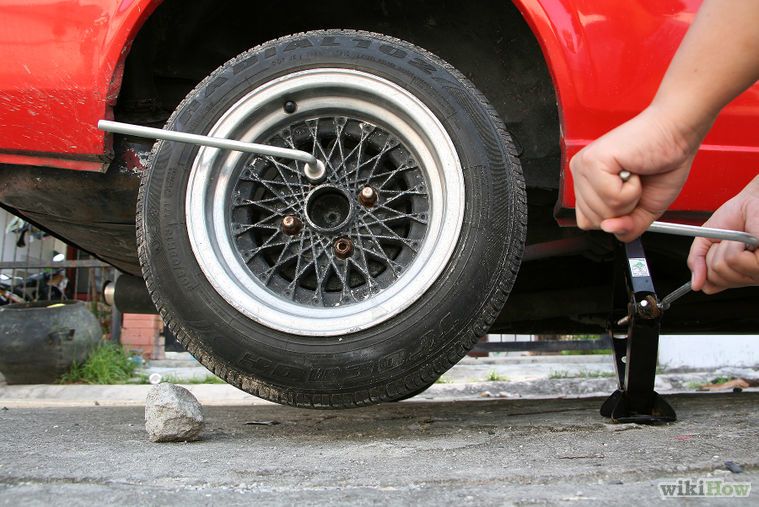 If you repair a simple puncture as soon as possible, it may run between $15 and $30. A simple
tire service typically utilizes plugs. These should last indefinitely, but it's a good idea to regularly check the tire pressure on any tires you've had plugged.
If you repair a simple puncture as soon as possible, it may run between $15 and $30. A simple
tire service typically utilizes plugs. These should last indefinitely, but it's a good idea to regularly check the tire pressure on any tires you've had plugged.
If you continue to drive with a flat tire, the repair costs will escalate, and in many cases, the tire or tires will all need to be replaced. Continuing to run on flat tires can also negatively affect the wheels, brakes, and suspension, not to mention the towing expenses that will be incurred when you are no longer able to drive your car without new tires.
Even more important than your flat tire repair cost is your safety. If you don't know how to change a flat tire or if you don't have the tools, don't try to do it yourself. It’s the smart thing to call for help!
Wondering how much does flat tire repair cost? Contact our ASE Certified Technicians at Rum River Automotive for more information about tire service and to schedule an appointment.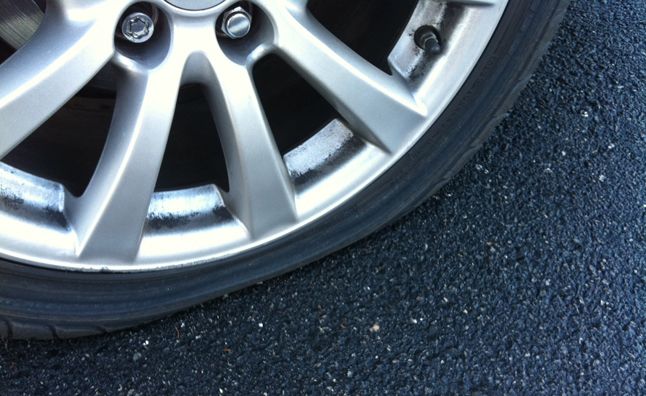 Since 1997, our auto shop has served vehicle owners in Princeton, MN and in the surrounding areas of Milaca, MN, and Zimmerman, MN.
Since 1997, our auto shop has served vehicle owners in Princeton, MN and in the surrounding areas of Milaca, MN, and Zimmerman, MN.
Tom Quast
Tom Quast
What is Tire Repair?
Tire repair refers to the process of replacing a faulty tire with a new one or simply repairing a tiny puncture. While it sounds like a job anyone with two hands can handle, it’s recommended to go to a shop that specializes in repairing tires to ensure that you get your problem solved completely.
Why You May Need Your Tire Repaired?
Years ago, car owners frequently dealt with the superfluous hassle of repairing their tires due to the quality. Thanks to the manufacturers and present day technology, tires are meant to withstand even the worst conditions on the road. While this holds much truth, it is not uncommon for people to find themselves needing to have their tire(s) repaired due to weather or other hazards on the road.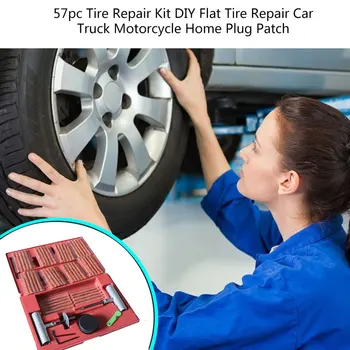
How Much Will A Tire Repair Run You?
While a tire repair won’t cost you an arm and a leg, it will cost you a bit of your time. If you’re looking into having a puncture repaired on a tire, you’re looking at spending on average between $10 to $20 dollars. The size of the puncture makes a huge difference and will determine the amount you will spend on getting your tire repaired.
Important Facts You Should Know About Tires
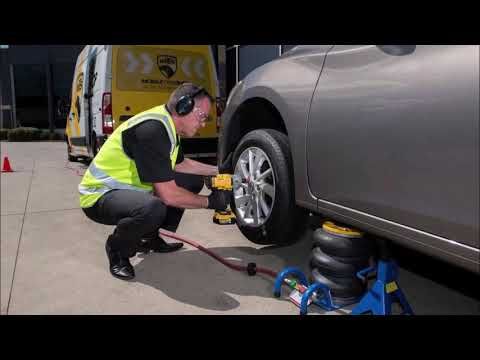 Depending on what shop, you might have the pleasure of getting your tire repaired free of charge.
Depending on what shop, you might have the pleasure of getting your tire repaired free of charge.What Process is Used When Repairing a Tire?
A tire plug is exactly what it sounds like; a sticky expandable plug that is inserted into the puncture in hopes of keeping the injury secure long enough for the tire to re-inflate with air. A patch is also pretty self-explanatory when it comes to description. Better known as a radial patch, this piece of material is used to seal up the damaged tire. Due to the heat caused by driving, the patch eventually melts into the tire completely erasing all notices of repair.
Most vehicles are equipped with a spare tire if you happen to be running on a flat. In some cases, you might have to go to your local car shop to purchase a tire depending on the circumstances.
The Difference Between a Plug and a Patch
While the plug takes less time and can be down without removing the entire tire in comparison to the plug, it’s more likely for a car owner to come back in a shorter amount of time for yet another repair after getting a plug opposed to a patch.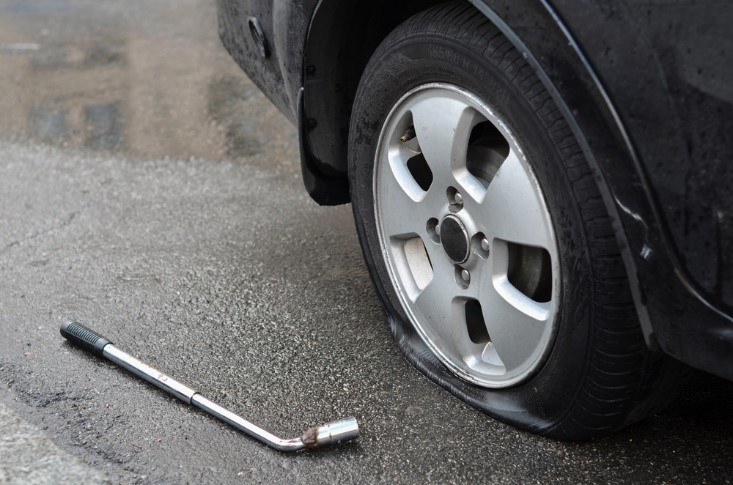
Sources:
http://www.tirereview.com/back-to-basics-1-basic-tire-repair/
https://www.carsdirect.com/car-repair/average-tire-puncture-repair-cost
http://txtire.com/blog/view/fixing-flat-tires-tire-plug-vs-radial-patch
Your Name (required)
Your Email (required)
Phone (required)
What is the best way to reach?
Phone
Email
There is not always a way to call a tow truck, and driving on a flat tire, “chewing” the rubber and killing the rim is at least uncomfortable.
The very first replacement of rubber on a motorcycle or scooter gives reason to think - what is better in terms of quick repairs: tubeless ones that do not require wheel disassembly to eliminate a puncture, but leave the rider helpless if, along with damage, it “led” and flattened the edge of the disc? Or chambers - allowing sealing almost ring breaks (if only there were enough patches), but requiring the removal of rubber from the rim for this? The unequivocal answer is no. Few classics, straights or tourers today remain "loyal" to tube rubber models: tubeless tires are lighter, softer, warm up and cool down faster thanks to simplified heat transfer. In sports, more precisely - enduro and motocross, chamber - on the contrary, prevail: only spoked wheels can "play", withstanding strong alternating loads during landings and impacts.
Few classics, straights or tourers today remain "loyal" to tube rubber models: tubeless tires are lighter, softer, warm up and cool down faster thanks to simplified heat transfer. In sports, more precisely - enduro and motocross, chamber - on the contrary, prevail: only spoked wheels can "play", withstanding strong alternating loads during landings and impacts.
The nuance is that a tire with a chamber can be put on any spoked or cast disc, and a tubeless one can only be placed on a cast one, because only it can ensure tightness. Tube – can be installed in a tubeless tire as an emergency measure. In case of major damage to the sidewall, cracks or curvature of the edges of the rim, this will make it possible, after pumping up the wheel, to reach the nearest tire service (and there already - straightening, balancing and other maintenance according to the rules). True, for such a focus, it is advisable to take a camera with a face value one less than the diameter of the disk, otherwise it will create folds inside that will rub for a couple of hundred kilometers. The resource of such a “treatment” is large - until the next puncture, like a new one.
The resource of such a “treatment” is large - until the next puncture, like a new one.
It depends on the magnitude of the damage whether it will be possible to eliminate it on your own, or whether you will have to “surrender” to the motorized tow truck. In tubeless - holes up to 5–6 mm are patched, in chambers - as much as there is enough glue and patches, the main thing is the condition of the tire. To determine the extent of the disaster - find a place where you can safely stop without violating traffic rules (where it is prohibited - you will have to sacrifice tires and drive on).
If the wheel deflates slowly, and the object that pierced it is still inside, you can try to carefully drive to the tire shop. A completely deflated "pancake" will have to be resuscitated on the spot, or - remove the wheel and take it to the service.
To find a hole in a tubeless tire, if it is very thin and not immediately visible, the wheel must be pumped up, slowly pouring water - bubbles will go. In place, tubeless tubes can be “harnessed”, or filled with sealant inside, without removing from the motorcycle.
In place, tubeless tubes can be “harnessed”, or filled with sealant inside, without removing from the motorcycle.
With the second type of tires - more difficult. A torn balloon must be removed from the tire to detect a defect and seal. In a good way, the wheel must be removed from the motorcycle and disassembled on a clean, flat, hard base. Suppose such a “patch” can be provided even off-road, but how to remove the wheel on a motorcycle if it does not have a central stand? And shooting is not required. The motor must be carefully laid on its side, after making sure that the faucet is closed, gasoline does not flow out through the tank cap (antifreeze does not flow from the tank if the motor is “dropsy”), and removing the plastic or wardrobe trunk with fragile contents (if any).
You will have to unscrew the wheel from the motorcycle only if you need to replace the tire, or it is decided to patch the tubeless tube with a “fungus”. In the absence of a central stand, this will also have to be done on a lying bike, or - make this stand from improvised materials (bricks, stump, car jack), placing them under the crankcase protection from below, the central tube of the frame, the duplex jumper (but not under the plastic, itself engine crankcase or attachments!), under both footrests - if they are not folding, or - under the pendulum.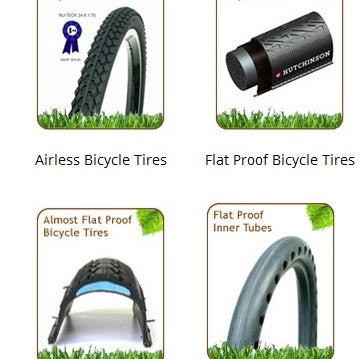 Before removing the rear wheel on a motorcycle, the front fork must be loaded with something, or an even higher lining is made.
Before removing the rear wheel on a motorcycle, the front fork must be loaded with something, or an even higher lining is made.
In a motorcycle tire fitting shop, tubeless tubes are repaired by cold vulcanization. They are removed, disassembled, the puncture site is cleaned from the inside, degreased, lubricated with glue and a calibrated “fungus” patch is inserted into the hole from the inside. The fungus itself is a thin plate of rubber with a “leg” tube in the center. The leg - by the guide wire is dragged through the hole of the damage, and the "hat" seals it.
After half an hour - you can put the tire back. The reliability of such a repair is high, the patch does not cause a significant imbalance, the service life of a sealed tire does not decrease.
This method is also applicable on the road, the main thing is to have the necessary equipment and materials with you:

The fungus repair procedure does not require much experience. The main thing is to keep it clean, fully clean the place where the patch fits, let the glue dry slightly to a dull finish and press (roll) the surface of the fungus with high quality, expelling all the air between the layers. If necessary, you can degrease the place before gluing with gasoline, but without the rest of the above, it will not be possible to fully carry out repairs.
The compressor is sometimes replaced by a small cylinder of compressed air or carbon dioxide. Unlike a mechanical pump, it will immediately create a “throw” of pressure, pressing the tire beads against the rim flanges (in emergency cases, even a fire extinguisher was used to pump flat tubeless wheels). When connecting the compressor, start the bike's engine before you start inflating the tire - let it idle. Otherwise, the motor can "land" the battery, and you will not start.
Otherwise, the motor can "land" the battery, and you will not start.
Manometer - needed for control. It is undesirable to pump over the repaired tire. It is recommended to "inflate" 0.2 atmospheres less than the nominal value. Inflating too little is also bad: a flat tire has a larger contact patch with the road, so the place of a fresh patch will deform more.
“Burning” a tubeless tube and sealing its internal cavity through a nipple are quick, simple methods that do not require special skills. To repair the damage, you only need the materials themselves, and how to pump up the wheel.
Now in Moscow, and not only, 6-5 varieties of cans with a sealant are sold - a quickly hardening "liquid rubber", with a volume of 800 to 250 ml.
Applying "Anti-Puncture" is simple: put a tube with a fitting on the nipple of the camera, turn the can over, and hold the button according to the instructions. Then - pump up the wheel, cleaning the nipple from the foam, roll it, making a full turn to distribute it.
Then - pump up the wheel, cleaning the nipple from the foam, roll it, making a full turn to distribute it.
The sealant is blown out with air into the puncture hole and clogs it, solidifying. After 20 minutes - you can go. Reliability of repair is high. Resource - until the next puncture.
If you have a compressor, start immediately pumping up the wheel, so it will be easier to work with a puncture, insert a patch, and it will swell faster.
Procedure:

You can go in 5 minutes, you just need to make sure that it doesn’t descend anywhere else.
Outwardly identical, repair kits for harnessing wheels can differ in price by almost half. This variation is explained by different configurations - one will have only three items, the other - six or seven.
A complete tubeless tire repair kit contains:
Regardless of the cost, you need to choose a kit in which the harnesses will be reinforced, and the awl - with a deep spiral winding (notch), and not a “needle file”. Inserting a flagellum is sometimes easier with a regular thin screwdriver. If there is no glue in the kit, or it has dried up, the flagellum is moistened with gasoline.
Inserting a flagellum is sometimes easier with a regular thin screwdriver. If there is no glue in the kit, or it has dried up, the flagellum is moistened with gasoline.
At motorcycle service stations and car services, holes in the chambers are closed by hot vulcanization: a layer of raw rubber is applied to the cleaned, fat-free puncture site and, after squeezing it well, it is heated with a special “iron”. Iron - burns, layers - are fused into a single whole. Reliability of repair is high. The resource will be almost like a new one.
Cold vulcanization (patching) - used if the workshop is not equipped with a vulcanizer. In this case, the quality of the service and the reliability of the repair will depend on the accuracy of the master. For the convenience of gluing, the camera is completely removed in the service, but, I repeat, this is not necessary. It can be repaired on the spot in the same way (there are no other options except for replacing the camera), but without removing it from the motorcycle.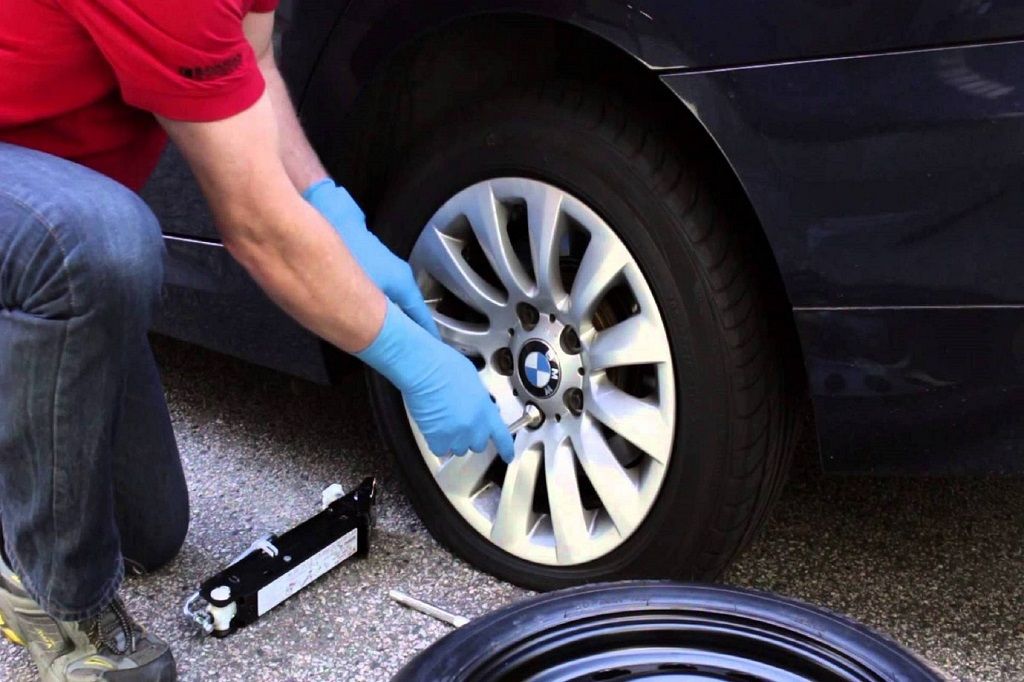
This can only be done if you have two metal mounting blades. At least one, the second can be replaced with another flat tool. You can still disassemble the wheel with a wide screwdriver and a “family” key wrapped with electrical tape. But this is only as a last resort, otherwise you can damage the cord.
Sequence of work:
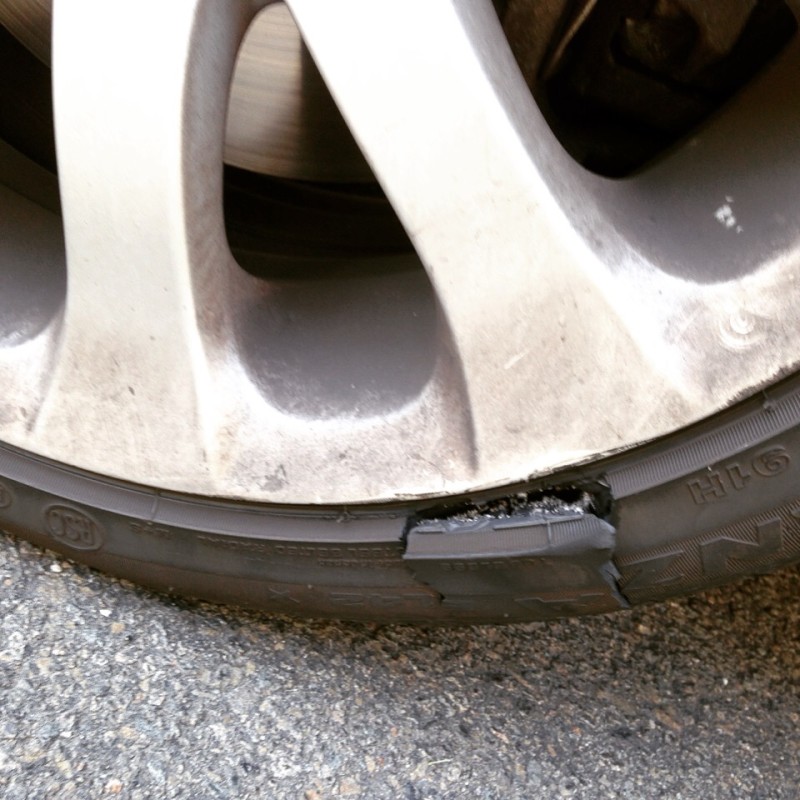 Let the glue dry for a minute.
Let the glue dry for a minute. The fencing must be carried out twice as carefully and more slowly than dismantling, lubricate the side with water or soap, “help” more with your hands, otherwise there is a risk of picking up the edge of the chamber with a spatula and tearing it.
Important! If the wheels of the motorcycle are equipped with tow bars - before pressing the tire bead from the rim, you need to loosen this tow bar! But do not unscrew the nut completely, do not disassemble to the end.
A standard “first aid kit” (a set for repairing classic motor rubber) contains only patches and glue, so it is advisable to supplement it yourself with a piece of “skin” or a needle file. You can degrease with gasoline, or apply a little glue first and wipe off immediately, rolling up the dust with it.
Now there is no shortage of specialized motorcycle workshops not only in Moscow - in all major cities there are motorcycle helpers who help motorcyclists directly on the track, or tow to where you can quickly change the camera, or patch the tubeless correctly, so that there is no trace left. Where there is a guarantee.
Self-replacement of a tire on a motorcycle requires a certain physical condition, and for the first time - a “kilometer of nerves”. At the service station, instead of you, automation will “sweat”, which will not lock up the board and will not scratch the disc coating with a spatula. The main thing is to do it quickly (if you need to go urgently, the price sometimes does not matter).
At the service station, instead of you, automation will “sweat”, which will not lock up the board and will not scratch the disc coating with a spatula. The main thing is to do it quickly (if you need to go urgently, the price sometimes does not matter).
Repair at the service - may be the only possible one if, due to driving on a flat tire, the tire nipple is turned and torn off. Especially if he flew off and got lost, but there is no spare. In mototiremontazhke - there is always a set of consumables for any wheel diameter. In the same place, in extreme cases, you can buy a new tire, or a used dokatka.
In addition to the patch, for normal operation of the wheel, balancing must be ensured. This is generally a useful procedure during any change of rubber, otherwise if there is a strong imbalance, the wheel bearing will inevitably break due to vibrations, and the hands will quickly get tired and “buzz” after long rides.
The first couple of tens of kilometers - do not drive, go at the speed of the flow.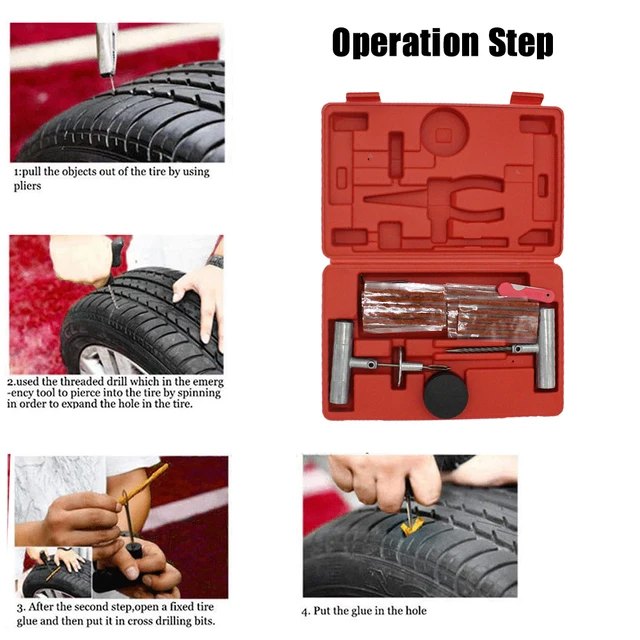 Stop, check for a flat tire. If the patch is not of high quality, it will manifest itself almost immediately. Parking will tell about the long-term perspective: if the cylinder has not lost volume in the first day or two, then everything is in order, you can drive as before.
Stop, check for a flat tire. If the patch is not of high quality, it will manifest itself almost immediately. Parking will tell about the long-term perspective: if the cylinder has not lost volume in the first day or two, then everything is in order, you can drive as before.
Knowing what to do if a flat tire is on the road is important not only “for yourself”. To help a newbie or a fragile girl is to earn an important “plus in karma”, which will later return at the right moment. But, I hope, this knowledge will be useful to you only in theory. Good luck on the roads, no nail, no wand!
[Prokol24]
How to determine warranty tire repair.
Home / Guarantees for work
Our company uses only materials from the American company TECH, which is the inventor of all existing tire repair methods. This company has been proving its reliability since the 50s.
For tire repairs, we guarantee
from 14 days to 3 years.
What does the warranty depend on?
From the condition of the tire
The more worn the tire, the less the warranty. When driving on a flat tire, there may be extensive damage to the side surface. All this is taken into account during the repair.
Against damage
If the damage is large, we can reduce the warranty period for labor.
From repair method
Different repair methods require different warranty periods.
From tire size
Low profile and runflat tires have less repairability.
Upon receipt of a complaint about work, another master leaves, diagnoses and performs free warranty repairs.
In case of warranty repair of a puncture or cut in a tire, you will be given an order - an order with the date and time of repair, type of repair, address where the work took place and the signature of the master who carried out the repair. In the future, if a warranty case occurs, call the toll-free number and provide this data. Another master leaves for re-repair, makes diagnostics and carries out a free re-repair of the tire. If repair is not possible, your money will be returned.
Another master leaves for re-repair, makes diagnostics and carries out a free re-repair of the tire. If repair is not possible, your money will be returned.
In the event of damage in these areas of the tire, the warranty repair is not possible.
A-B - Non-repairable area. This is a high load area. If damaged, the tire must be replaced.
L - Length of tire sidewall damage.
W - Tire sidewall damage width.
C - The maximum diameter of damage in the tread.
S-T - Shoulder area 40 mm.
According to the technology, guaranteed repairs can be carried out in cases where:
- The diameter of the puncture - C in the tread is not more than 40 mm.
- The width of the tire side damage (cut) is not more than 30 mm.
- The length of the lateral tire damage (cut) is not more than 50 mm.
During warranty repairs, the master will issue you a warranty sheet with the date and method of repair.
Also, the master puts his signature and the date of repair on the installed patch.
After repair in the tread zone, the tire can be used without restrictions (except for the restrictions set by the manufacturer)
After repair of side damage, the tire speed index decreases to index T - 190 km / h
Also, non-repairable zones are provided in the tire.
Damage in these areas cannot be repaired. Tires need to be replaced.
Damage diagram for possible tire damage.
Shows a puncture in the tread area and cuts in the sidewall.
Non-warranty tire repair.
THERE ARE CASES WHEN THE TIRES CANNOT BE REPAIRED BUT YOU HAVE TO RIDE.
It often happens that a tire cannot be repaired with a guarantee, but there is no tire to replace at the moment, but you have to go. In this case, we do non-warranty repairs.
What does this mean?
A repair in which we seal the tire with patches or tubes. But such repairs are not reliable and are only suitable for driving home or to a store at a speed of no more than 80 km / h.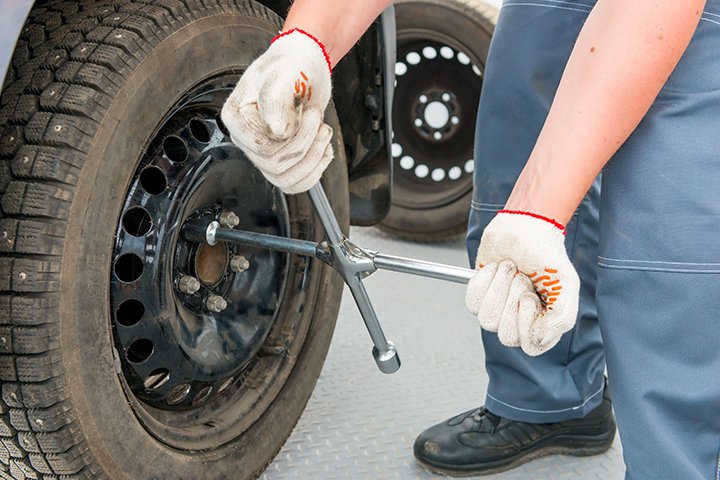 Our employees warn that they do not know how the tire will behave during this repair and the responsibility for it falls on the shoulders of the client.
Our employees warn that they do not know how the tire will behave during this repair and the responsibility for it falls on the shoulders of the client.
Since tires are the only part of the car that comes into contact with the road, it is better and safer to avoid out-of-warranty repairs and change the tire right away.
Very often we hear dissatisfaction from customers that we do not undertake to repair some damage. I want to say the following, that it is not we who do not undertake, it is the technology that does not allow us to make repairs. These restrictions on the amount of repaired damage in height and length were introduced for a reason. These are the results of many years of testing in the laboratory. They showed that repairing larger damage is dangerous, and can cause tires to rupture and explode at speed. My people and I do not want to take on such responsibility for people's lives. I hope everyone understands this.
Dmitry
Director
“
I would especially like to say about the cameras.